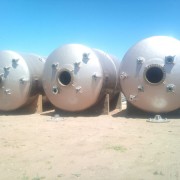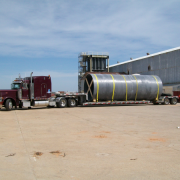Reducing Material Costs with Corrosion Resistant FRP Solutions
 Across a wide range of industries, material and metal costs are rising. Added to the increase in materials cost is the cost of damage caused by corrosion. A recent Owens Corning whitepaper, “How to Use FRP Material to Lower Corrosion Costs” by Mathew Lieser, discusses the application of fiberglass reinforced polymer (FRP) across industries to help curtail these rising costs.
Across a wide range of industries, material and metal costs are rising. Added to the increase in materials cost is the cost of damage caused by corrosion. A recent Owens Corning whitepaper, “How to Use FRP Material to Lower Corrosion Costs” by Mathew Lieser, discusses the application of fiberglass reinforced polymer (FRP) across industries to help curtail these rising costs.
Corrosion
What is corrosion? “During the process of corrosion, an engineered material actually disintegrates into its constituent atoms as a result of chemical reactions with its surrounding environment. Corrosion can be concentrated locally to form a pit or crack or it can extend across a wide area, almost uniformly corroding the surface.”
The damage caused by corrosion adds up to billions of dollars in repair costs worldwide. Since the installation of most of these corroding materials, FRP materials have been designed that have the ability to withstand corrosion. While there are other options for fighting corrosion, like surface treatments or coatings, FRP offers by far the most economical corrosion resistant solution. FRP solutions have also had over 50 years of tested service experience, “FRP is now a proven material technology.”
The 5 Steps
Although FRP material solutions used to have a higher upfront cost than other materials, like steel, the recent rise in metal costs have made even upfront FRP material costs less. The long service life and lower maintenance costs of FRP, coupled with lower upfront costs, make FRP ideal for lowering overall building costs. To fully utilize the corrosion and money saving properties of FRP Lieser offers up a five step system.
- Identify suitable applications for FRP material
- Implement company FRP material standards
- Use existing governing standards to have FRP equipment made for use in corrosive environments (ASME, ISO, ASTM, etc)
- Specify proper materials (glass fiber, resin, corrosion barrier) to construct the FRP application
- Implement proper inspection protocols
To learn more about the five step and download the full Owens Corning whitepaper, click here.












